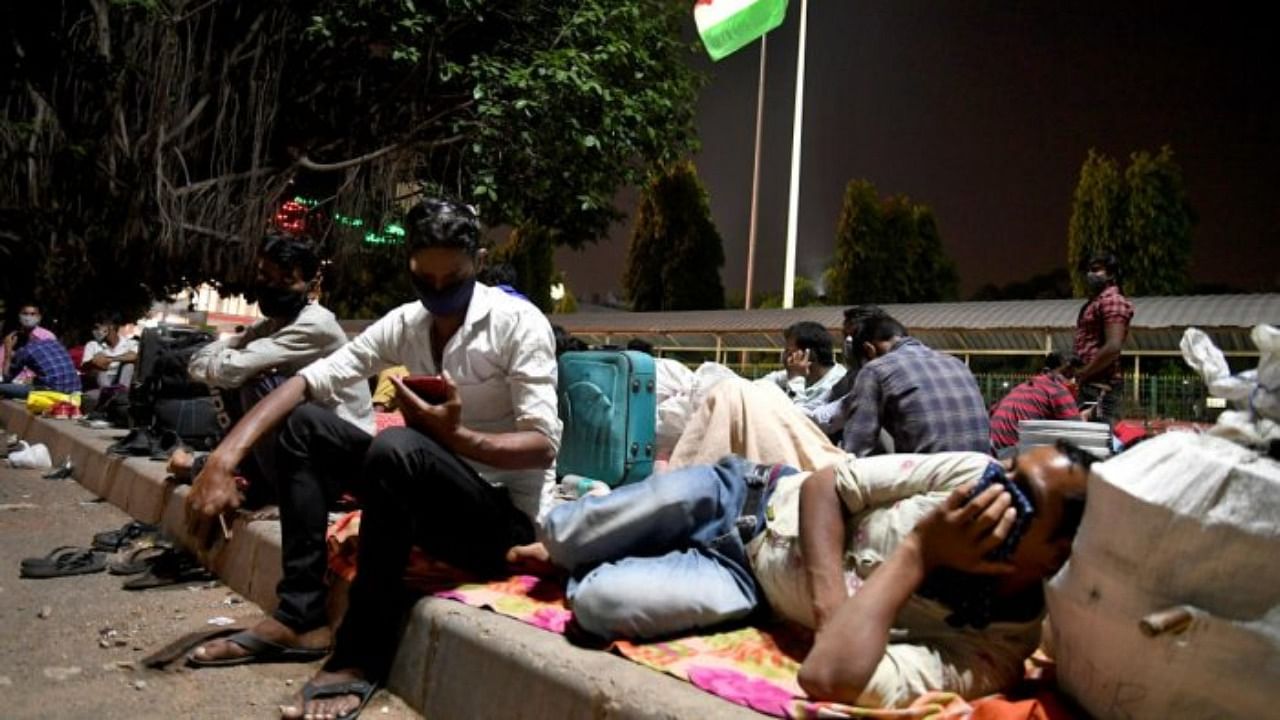
As overcrowded buses handled an exodus of people from Bengaluru to towns and rural interiors of Karnataka, officials at many districts expressed concern over the local health infrastructure’s ability to meet the surge.
By the time the close-down curbs came into effect, it is estimated that lakhs of people left the city for their hometowns. “We have run about 2,000 additional buses, most of them to north Karnataka, Mysuru and coast on Tuesday. More buses are on standby if needed,” a senior official from KSRTC told DH.
The surge in fares of private buses also reflected the increase in demand.
The exodus, however, has come as a headache for district-level officials, especially those managing the pandemic with limited infrastructure. Data released by the government shows an increase in active cases contributed by districts from 36.76% to 44.86% within the last seven days.
On April 20, Karnataka reported 21,794 cases of which Bengaluru contributed the lion’s share of 63.23%. On Tuesday (April 27), Bengaluru’s share fell to 55.13% as districts started reporting more cases.
An official from Chitradurga told DH that the 700 beds will hardly suffice for the cases being reported locally.
“The flood of people poses a major threat due to the high positivity rate in Bengaluru, which means cases may spread to taluks and even villages. A new system of contact tracing right at the village level has to be taken up to quarantine and test people arriving from the state capital,” he said.
To a question, Health Commissioner K V Thrilok Chandra acknowledged the difficulty in implementing a robust contact tracing system.
“Due to high positivity rate, contract tracing has become difficult. We are advising districts to take up enhanced surveillance measures. We have already told them to increase Covid Care Centres to reduce burden on hospitals,” he said.
Even for districts that have better health infrastructure, the increase in caseload is a big challenge. Dakshina Kannada district health officer Dr Kishore Kumar said the administration was well prepared to handle the increase in number of cases but managing the cases at village level will be a challenge.
“Even before lockdown, people were coming to Dakshina Kannada from Bengaluru and Mysuru but their numbers were steady. We have more than 4,000 beds and are prepared to handle even the present rush. But when it comes to ventilators and oxygen, there will be challenges if the case load overwhelms the system. We are launching a portal to provide information on such facilities,” he said.
An official from Davangere said that of the 1,882 beds in the district, 507 have been occupied. “Many people from neighbouring districts and even Bengaluru are seeking our beds. They get a local test done and provide the address of a relative to get the beds. For us, the real worry is about the containing of the disease at village level. Though we have set up committees at gram panchayats, we are likely to face a problem when it comes to quarantining and isolating the primary contacts,” the official said.
An official from Mandya said they were setting up more Covid Care Centres to cater to the possible increase in cases due to arrival of people from Bengaluru. “We are stuck between Bengaluru and Mysuru both of which have high positive rate. We are focusing on educating the Covid patients about requirement of oxygen and Remdesivir,” he added.